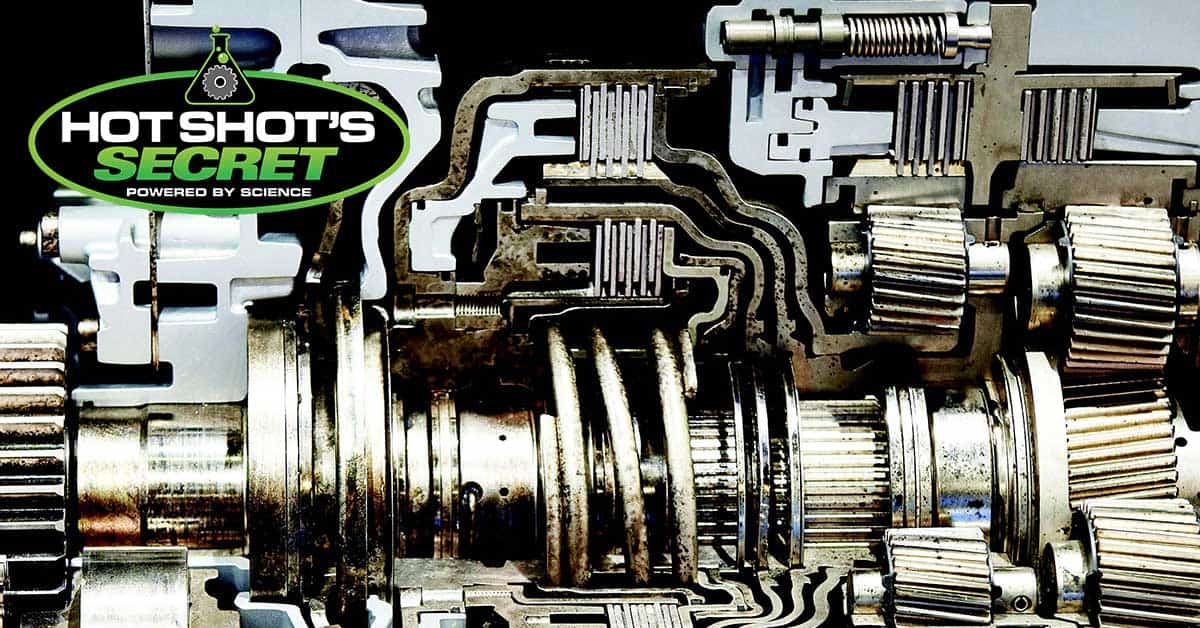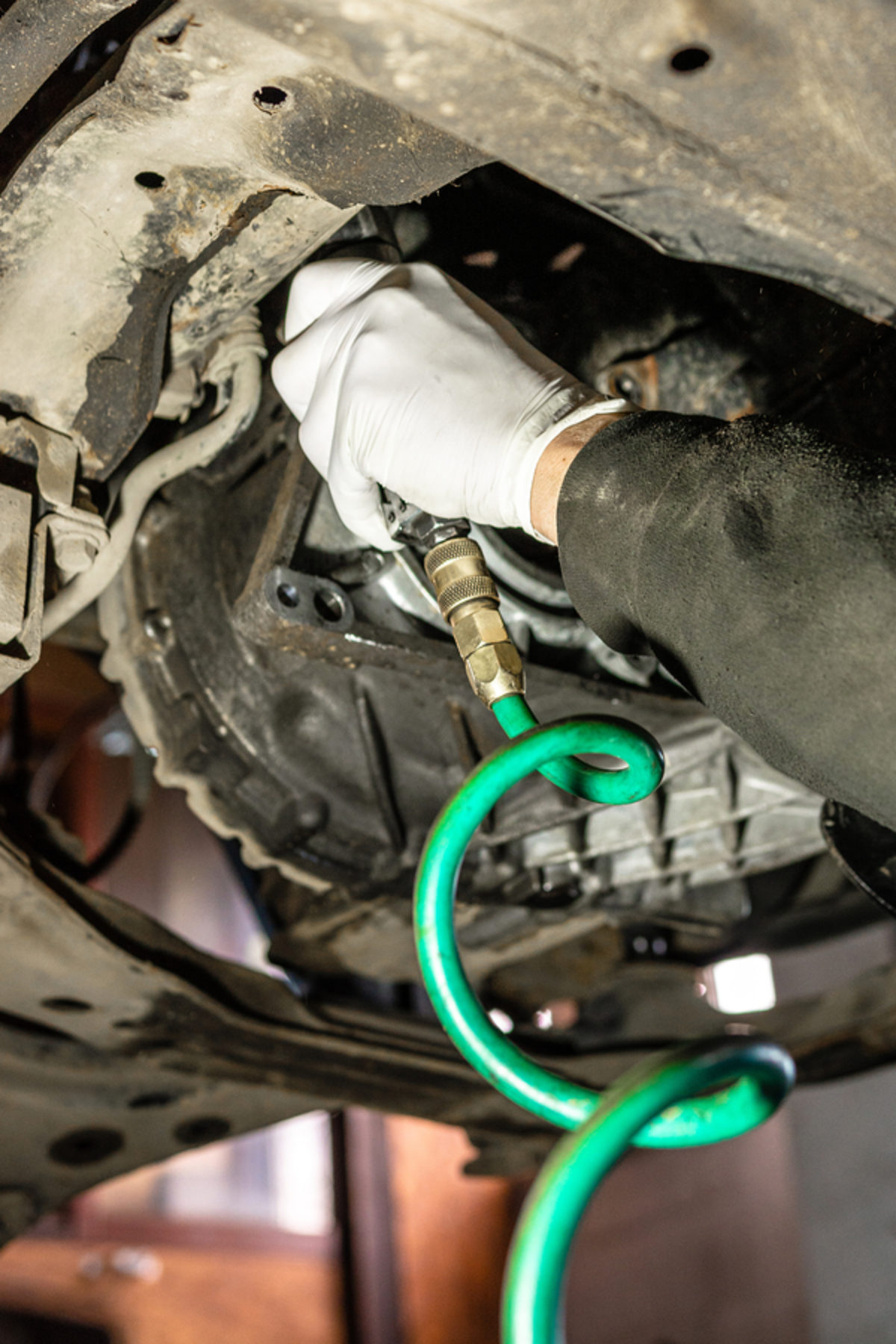Introduction
The transmission is a vital component of your vehicle that allows the engine to transfer power to the wheels. It is responsible for shifting gears smoothly and efficiently, ensuring a comfortable driving experience. Transmission fluid plays a crucial role in the proper functioning of the transmission, serving as a lubricant, coolant, and anti-wear agent. Over time, however, transmission fluid can become contaminated with dirt, debris, and metal shavings, affecting its performance and leading to transmission problems.

Image: www.hotshotsecret.com
To maintain optimal transmission performance and prevent costly repairs, it is essential to flush the transmission fluid regularly. Flushing involves removing the old fluid and replacing it with new, clean fluid. The frequency of transmission fluid flushes depends on various factors, including the vehicle type, driving conditions, and the type of transmission fluid used. In this comprehensive guide, we will explore the details of how long to flush transmission fluid, ensuring optimal vehicle performance and longevity.
Understanding Transmission Fluid Flushing
Transmission fluid flushing is a maintenance procedure that involves draining and replacing the old fluid with new, clean fluid. It is recommended to flush the transmission fluid at regular intervals to maintain its optimal performance and prevent transmission problems. Flushing removes contaminants, prevents sludge buildup, and ensures proper lubrication and cooling of the transmission components.
Modern vehicles often use synthetic transmission fluids, which have extended service intervals compared to conventional fluids. However, even synthetic fluids require periodic flushing to maintain their effectiveness. The recommended flush interval varies depending on the vehicle manufacturer, driving conditions, and the type of transmission fluid used. It is generally recommended to consult your vehicle’s owner’s manual for the specific recommended flush interval.
Factors Influencing Flush Interval
The frequency of transmission fluid flushes depends on several factors, including:
1. Vehicle Type:
Different vehicle types have different transmission designs and operating conditions, which can affect the flush interval.

Image: dashoffer.com
2. Driving Conditions:
Severe driving conditions, such as frequent towing or off-road driving, can increase the stress on the transmission and require more frequent flushes.
3. Type of Transmission Fluid:
Synthetic transmission fluids have longer service intervals than conventional fluids. Refer to the vehicle’s owner’s manual for the recommended flush interval.
Signs of Transmission Fluid Problems
If you notice any of the following symptoms, it may be an indication of transmission fluid issues:
- Delayed or jerky gear shifts
- Slipping gears
- Burning smell or leaking fluid
- Increased transmission noise
If you experience any of these symptoms, it is recommended to have your transmission fluid checked and flushed if necessary. Neglecting transmission fluid maintenance can lead to significant problems and costly repairs down the road.
Benefits of Regular Transmission Fluid Flushes
Regular transmission fluid flushes offer numerous benefits, including:
- Improved transmission performance
- Extended transmission life
- Reduced transmission noise
- Smoother gear shifting
- Protection against sludge and debris buildup
Investing in regular transmission fluid flushes can save you significant money in the long run by preventing major repairs or premature transmission failure.
DIY vs. Professional Flush
Transmission fluid flushing is a procedure that can be performed DIY or by a professional mechanic. While DIY flushes can save you money, they require knowledge, tools, and a dedicated workspace. Professional flushes, on the other hand, ensure a thorough and proper flush using specialized equipment and expertise. Ultimately, the decision depends on your comfort level and technical ability.
Additional Tips
Here are some additional tips to consider:
- Use the recommended type of transmission fluid specified in your vehicle’s owner’s manual.
- Change the transmission filter during a flush to remove accumulated contaminants.
- If your vehicle has a dipstick, check the transmission fluid level regularly and top it up if necessary.
- Avoid overfilling the transmission, as this can cause problems.
How Long To Flush Transmission Fluid
Conclusion
Transmission fluid flushing is an essential maintenance procedure for maintaining optimal vehicle performance and extending transmission life. Regular flushes remove contaminants, prevent sludge buildup, ensure proper lubrication, and protect against wear. The frequency of flushes depends on the vehicle type, driving conditions, and type of transmission fluid used. It is recommended to consult your vehicle’s owner’s manual for the specific recommended flush interval. By following the guidelines outlined in this guide, you can ensure your transmission operates smoothly and efficiently for many miles to come.
Remember, proactive maintenance is always preferable to costly repairs. By investing in regular transmission fluid flushes, you can protect your vehicle and enjoy a safe and reliable ride for years to come.